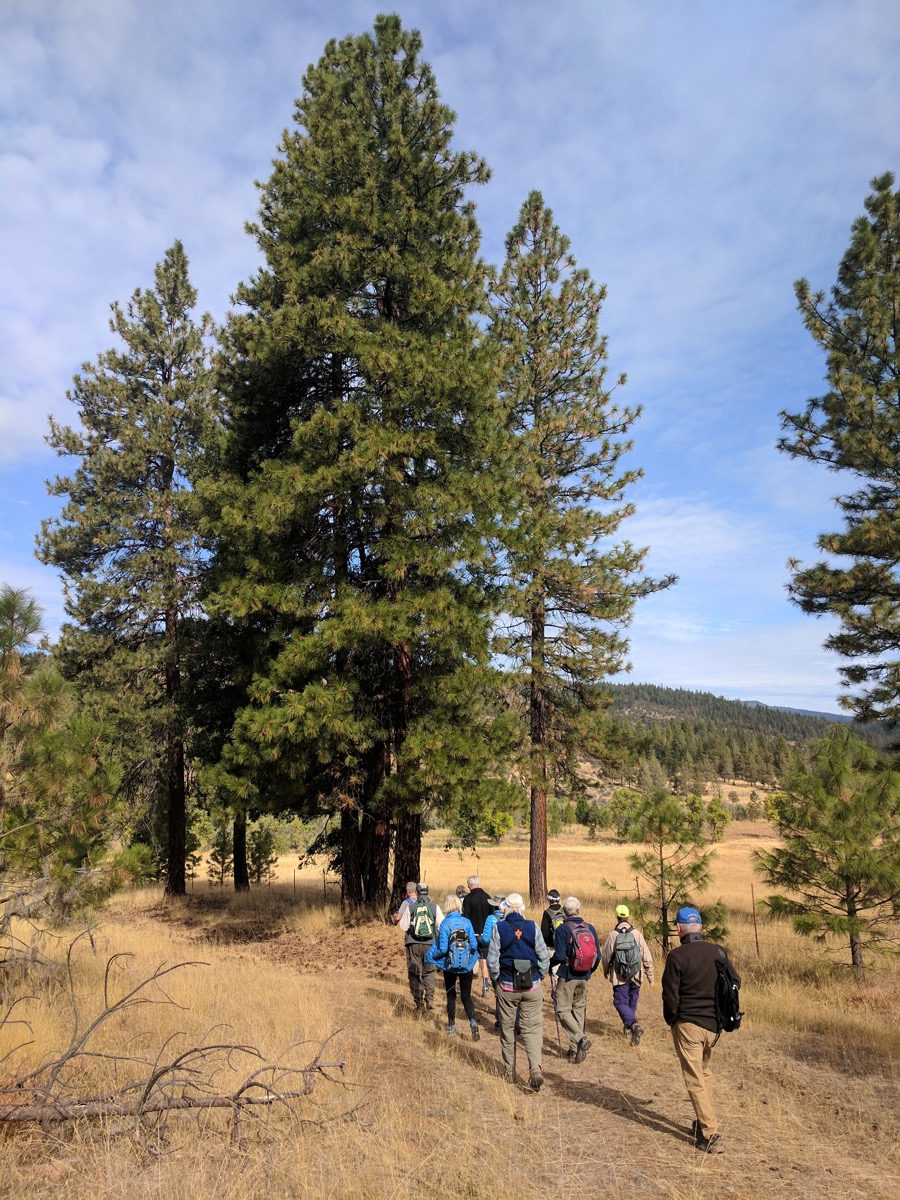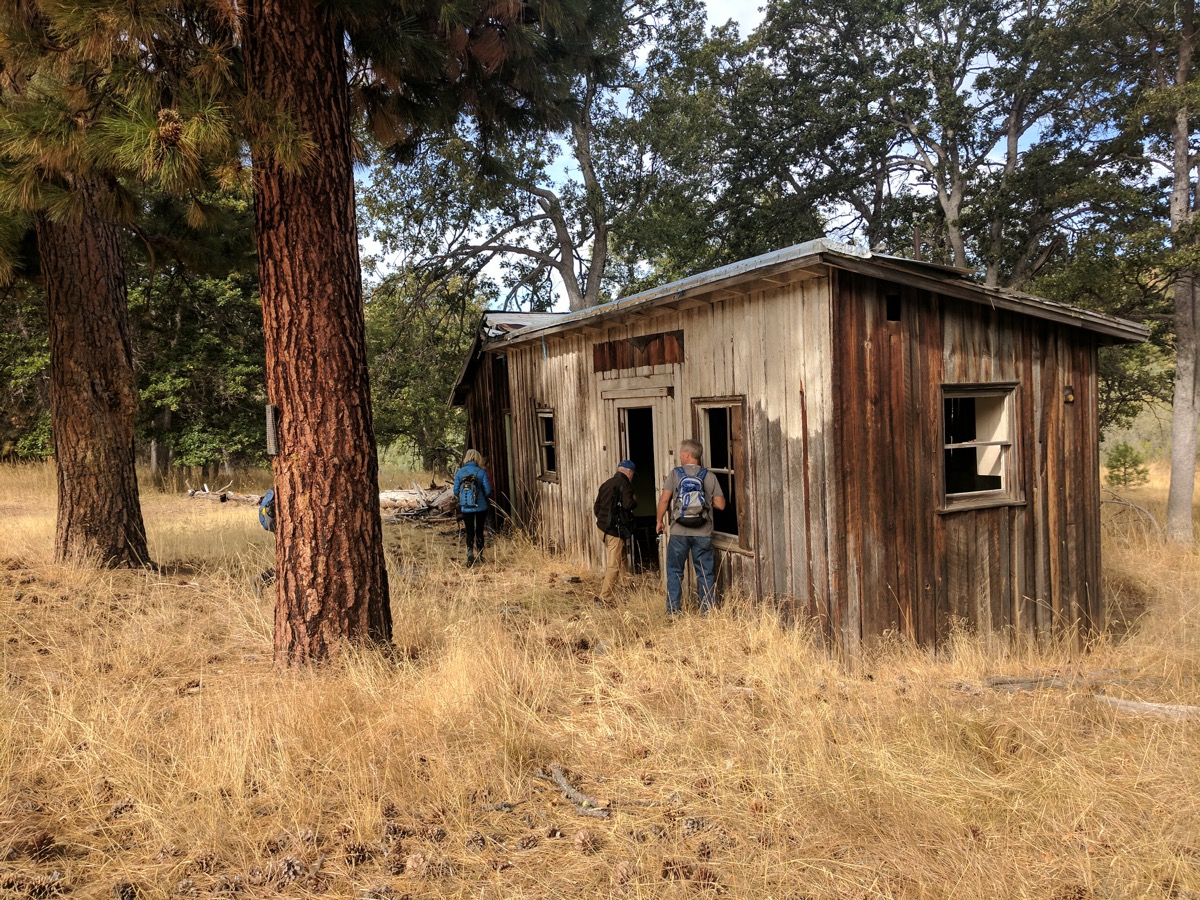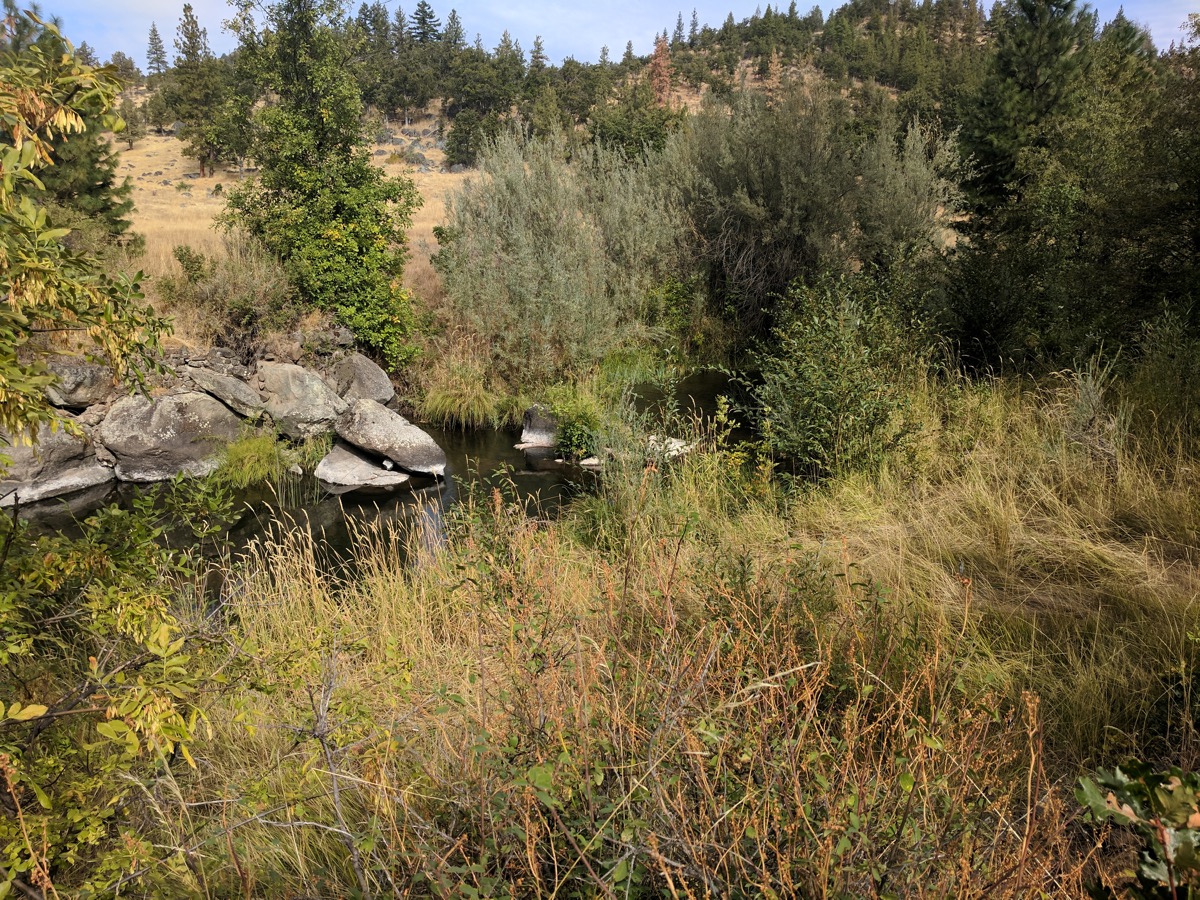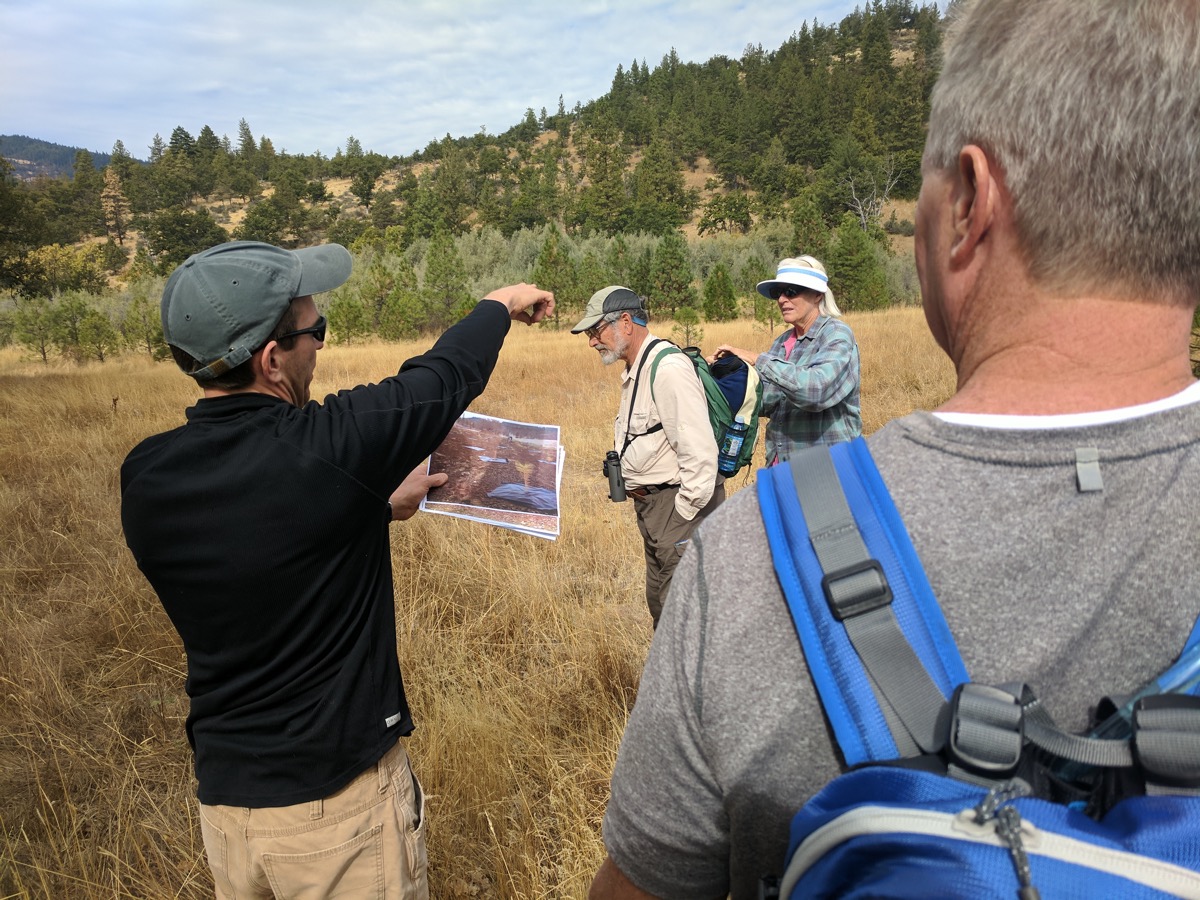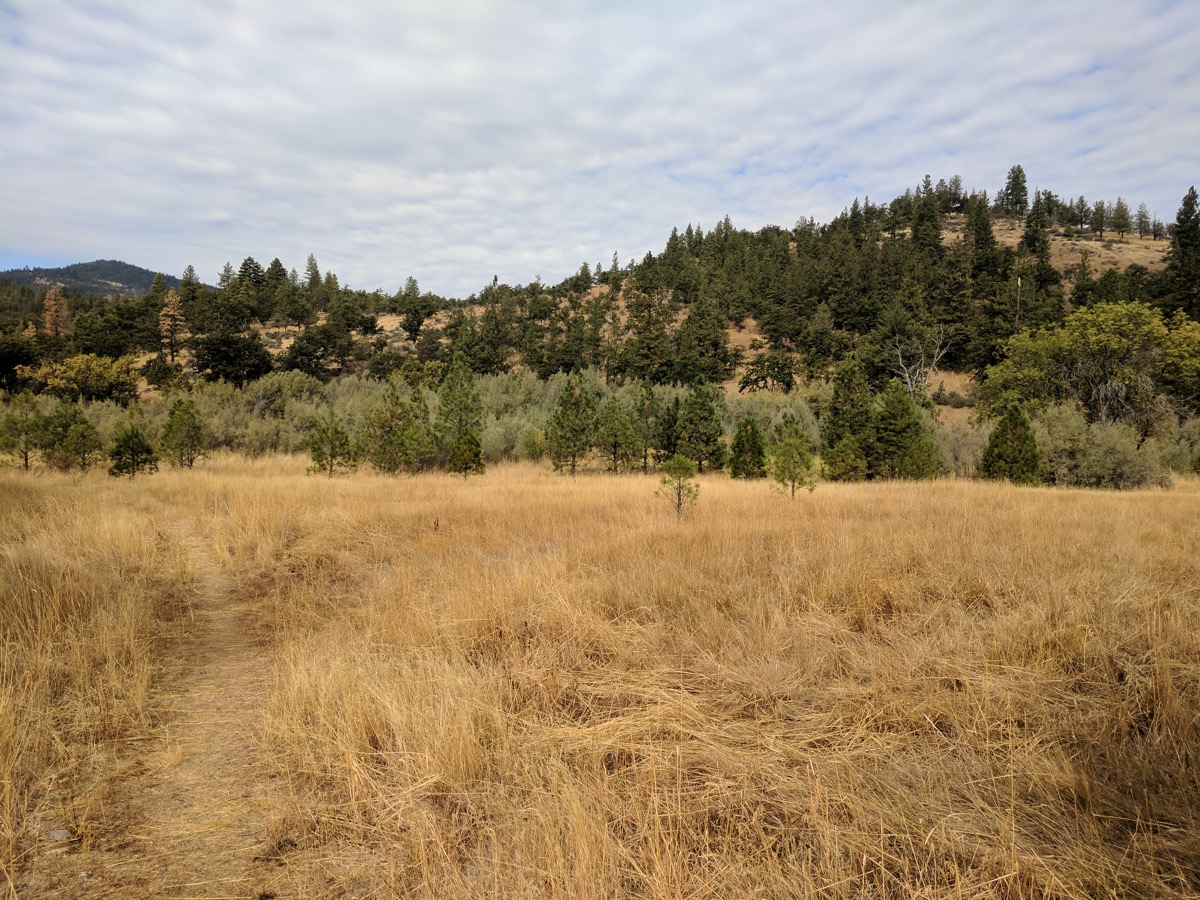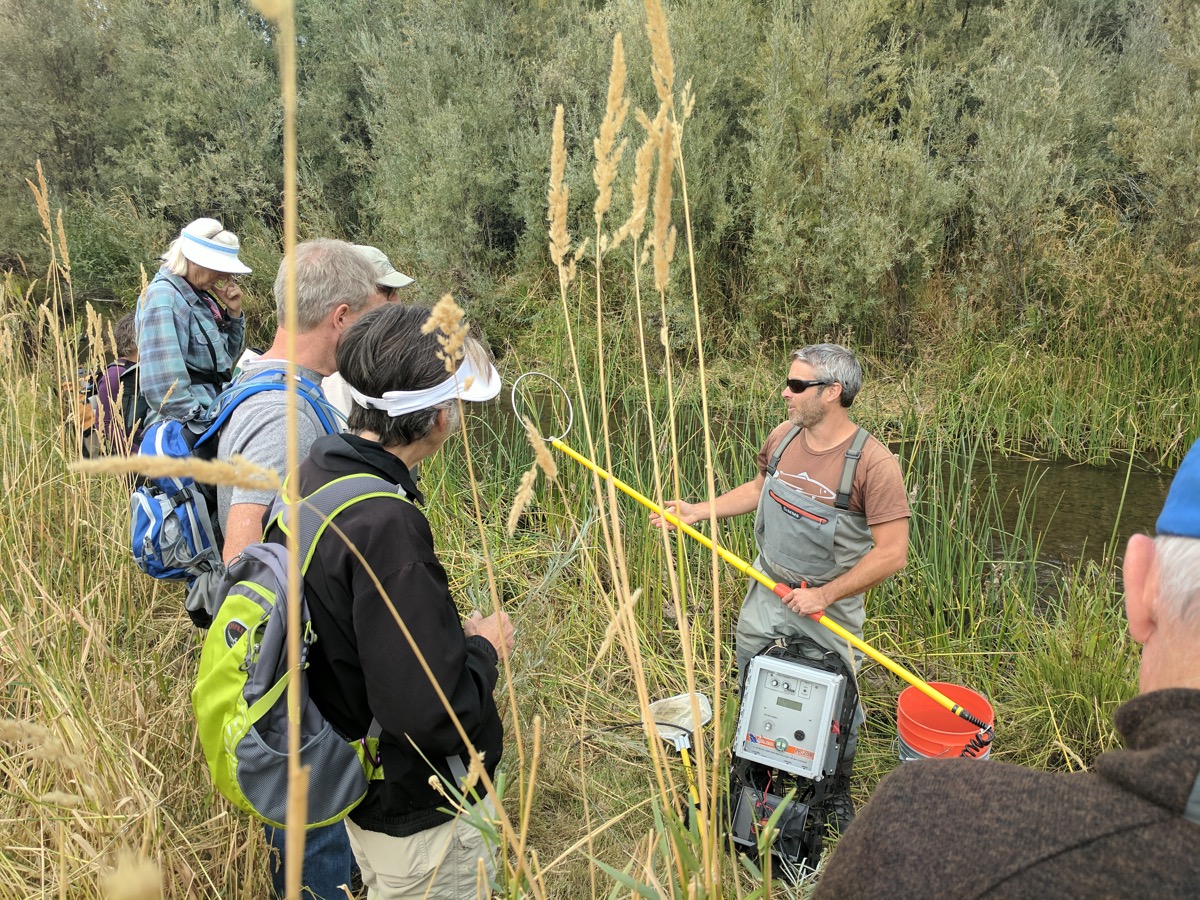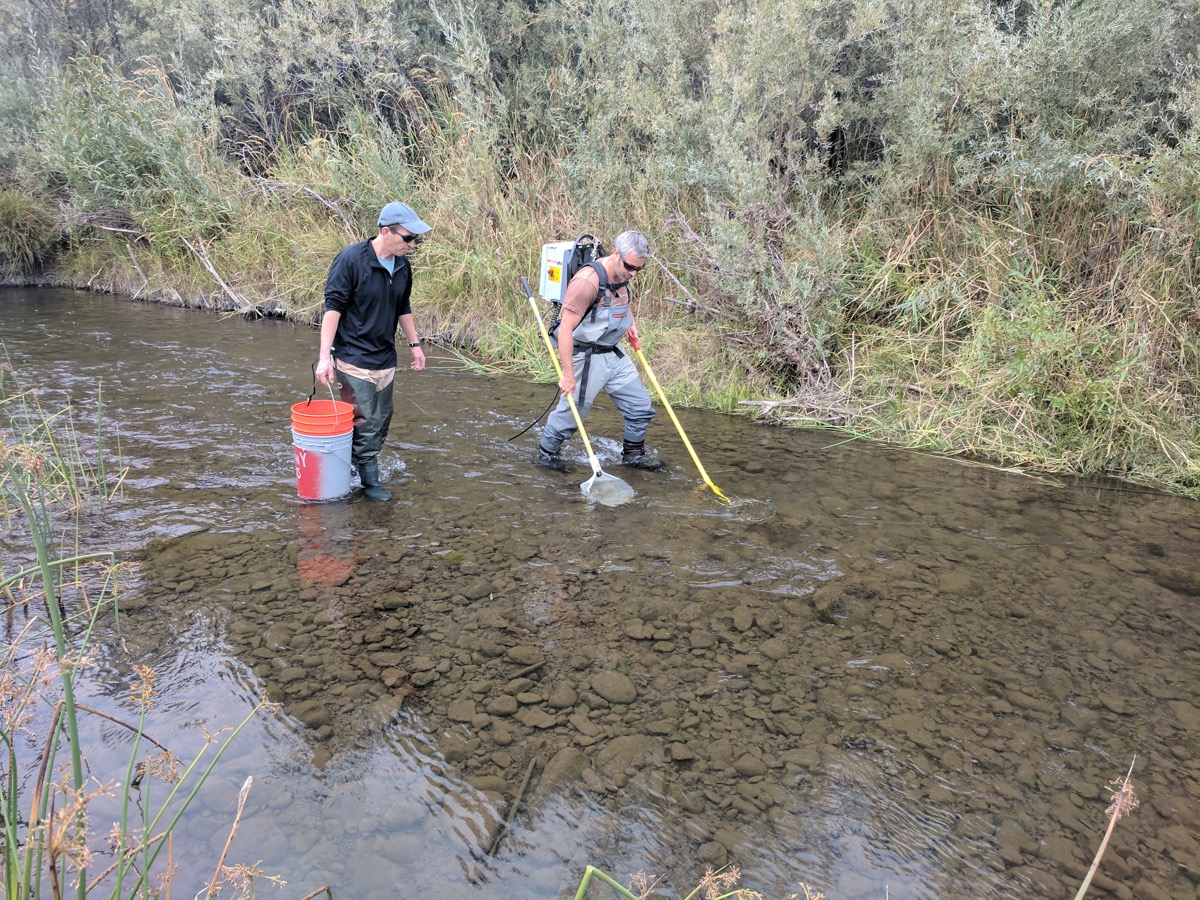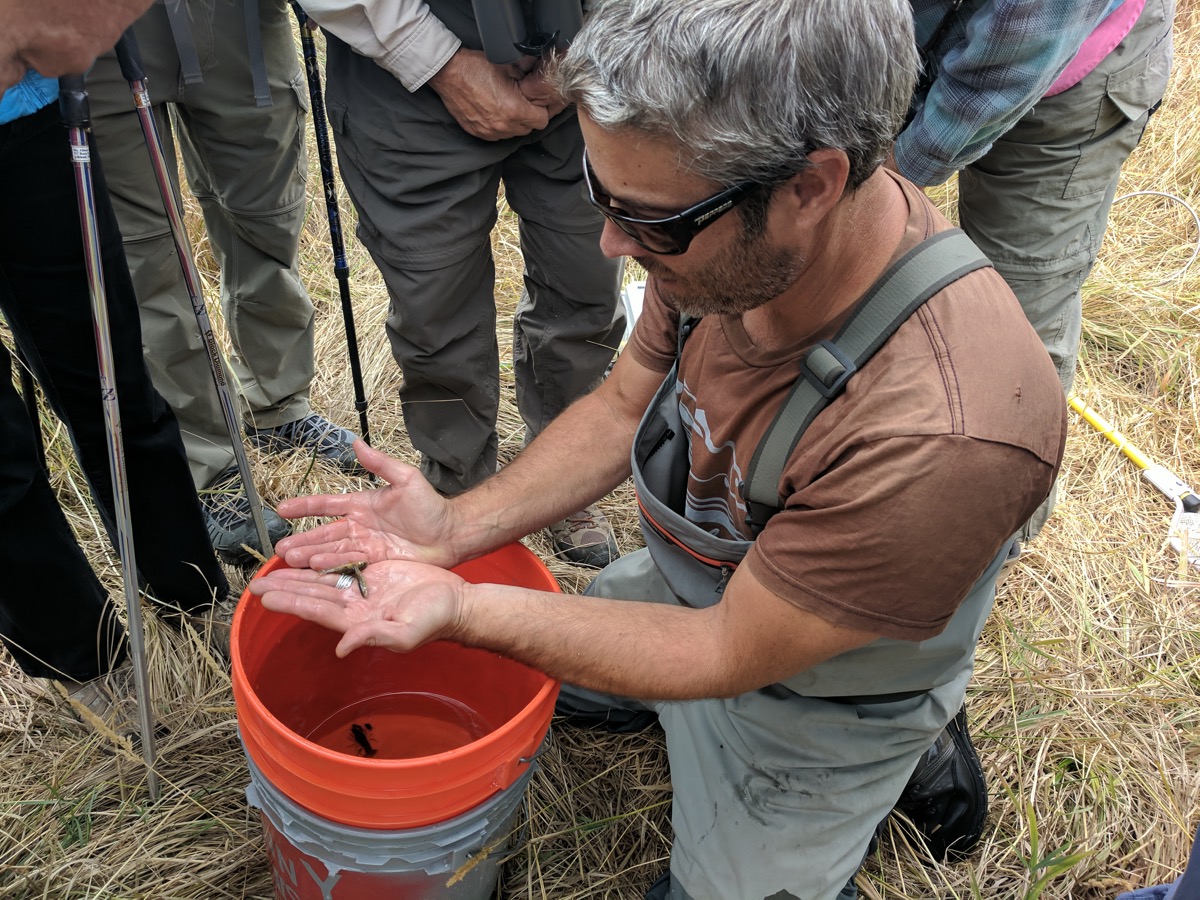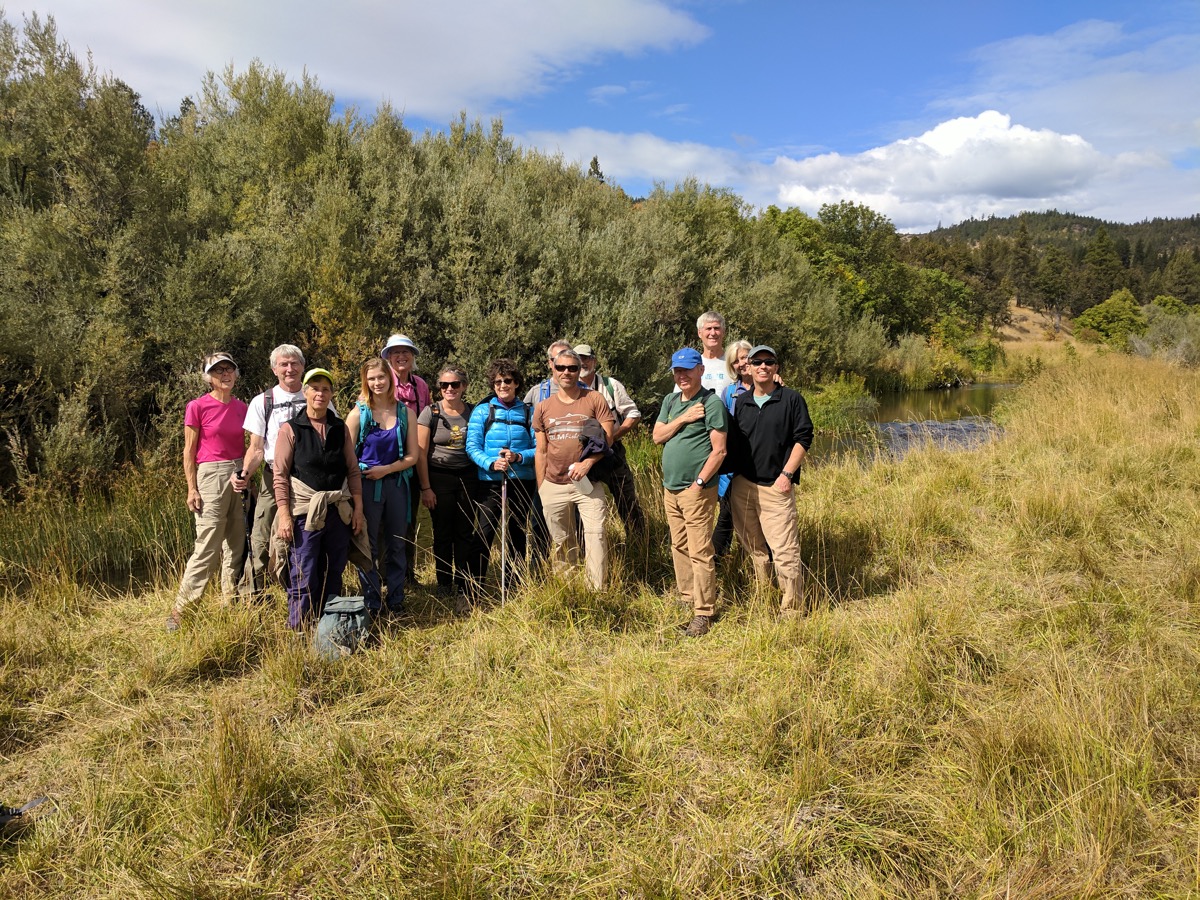September 22.
Hike Recap: Who Lives in the Creek with Chris Volpe and Tim Montfort
The Box O Ranch was acquired by the US Bureau of Land Management in 1995 as part of a land swap with a private property owner. The property was of interest because, among other reasons, it contained two stream miles of Jenny Creek. This special watershed has been monitored by the BLM since 1990 to keep track of its special ecology.
Jenny Creek is part of what is known as an upside down watershed. A typical watershed starts narrow with larger substrate consisting of pools and boulders near its source. As the watershed flows downward, combining with tributaries, the streams contain smaller substrates causing them to widen and flatten out. This is not the case with Jenny Creek’s watershed. In fact, just three river miles from its mouth on the Iron Gate Reservoir, Jenny Creek has a large series of falls that create a natural barrier. Any aquatic organisms spawned downstream of the falls have no way of making it above them.
Because of all this, the Jenny Creek watershed is home to a number of aquatic species that are genetically distinct from similar species found in the wider Klamath and Rogue watersheds. We set out on the morning of September 23, 2017 to find some of these species and observe some of the restoration efforts at Box O Ranch. Guiding our exploration were aquatic ecologist Chris Volpe and hydrologist Tim Montfort, both of the BLM Medford district office..
Chris and Tim led us down to Box O parking area, from Copco Road, where we left our vehicles and hiked into the ranch. Our hike leaders were very familiar with the Box O, as it was one of the locations where Chris monitors species like the Jenny Creek sucker and Tim has restored habitat by planting trees and making changes to the landscape.
We spent the morning in the grassy valley looking at pictures from before the restoration efforts and being amazed at the amount of change that has occurred over such a short time. A large amount of effort has gone into replanting trees based on old photographs from before the valley was homesteaded; trees like white oak, Oregon ash, ponderosa pine, and willow.
Chris set up his backpack shocker and pulled some fish from the stream. This interesting device works by having a wire dangling into the water and then a wand with an anode on the end. This creates a current of electricity in the water, exciting the fishes’ muscles. The muscle twitching forces the fish to swim toward the anode where it gets a stronger amount of electricity and is stunned. The stunned fish are then scooped up with a net and counted to survey the number of fish in any given area of stream. On the day of our hike, Chris was able to pull some Jenny Creek suckers and some speckled dace from the stream for us to look at.
The Jenny Creek sucker is an isolated population of the Klamath small-scaled sucker, which is endemic to the Jenny Creek watershed above Jenny Creek Falls. This small bottom feeding fish is not its own subspecies, but is different from the larger population, primarily in size, due to the different it habitat it finds itself in above the falls.
Upon further examination, Chris realized that one of the dace had a parasite. Making a small field dissection, he freed the parasite from the small fish. The worm unfolded from the abdomen of the fish to an impressive length. Identified as Ligula intestinalis, this parasitic worm starts as an egg in the stomach of copepods on the stream bottom, where a small fish eats it. It then grows and bloats the small fish until it cannot swim well and begins to struggle near the surface of the water. This makes it easier to get eaten by a bird, such as a heron or kingfisher, which is the final host for the parasite.
We ate our lunch on a grassy bank, and then hiked down the creek enjoying the beautiful valley, discussing the future of Box O and Jenny Creek. We then made our way out along the old irrigation canals and back to our vehicles.
Story and photos by
John Ward, Hike and Learn Coordinator
